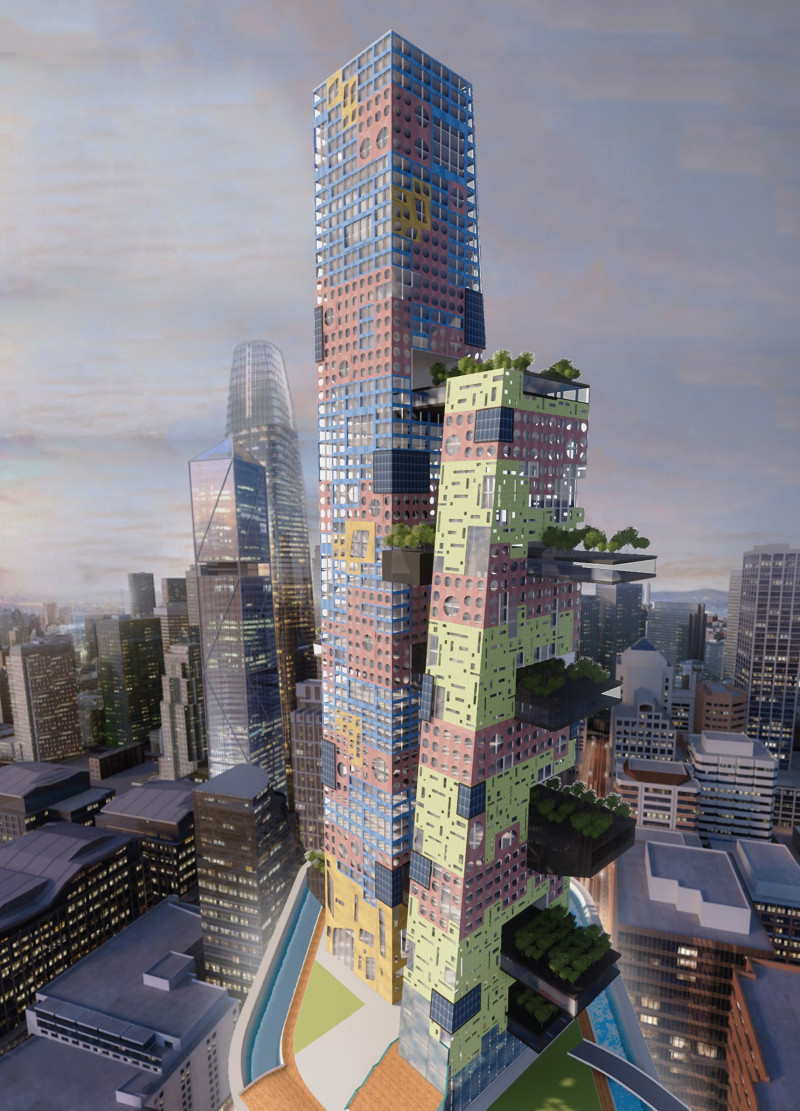5 key facts about this project
The Towers for Artists project stands as a response to the needs of the artistic community in San Francisco. It is built in an urban setting that has seen significant changes over the years, affecting the availability of affordable spaces for artists. The design focuses on providing a platform for creatives to live, work, and connect with one another. It aims to blend residential and artistic spaces, fostering collaboration and community among artists who often face displacement due to rising costs.
Programmatic Integration
The design includes 136 artist studios, 375 residences for artists, and 23 galleries. In addition to these, it incorporates a performing arts theater, educational spaces for art studies, and areas for food and beverage offerings. The inclusion of outdoor art viewing platforms allows for public interaction and engagement with various art forms. Each element is strategically positioned to encourage relationships between artists and their surroundings, creating a vibrant atmosphere.
Spatial Organization
At ground level, the site functions as an active hub. Carefully designed pathways offer new routes that encourage people to explore and connect. By disrupting traditional traffic patterns, the design integrates everyday life with the artistic community. This approach makes the space more accessible and inviting for both artists and the public, enhancing social interaction.
Vertical Structure
The project consists of two separate towers: one focused on artist residences and studios, and the other housing theaters, galleries, and retail spaces. This division highlights the relationship between living quarters and commercial ventures. The two towers are linked by secondary hubs, referred to as "planks," which serve as informal gathering spots, adding to the liveliness of the space.
Design Details
Public open spaces are shaped by a thoughtful arrangement of various elements, including playgrounds, sculptures, and performance areas. Exhibition spaces and communal areas are spread across different levels, presenting varied views of the cityscape. This layered design invites participation and exploration, encouraging a blend of art and community engagement. The result is a cohesive environment that nurtures both creativity and connection.





















































